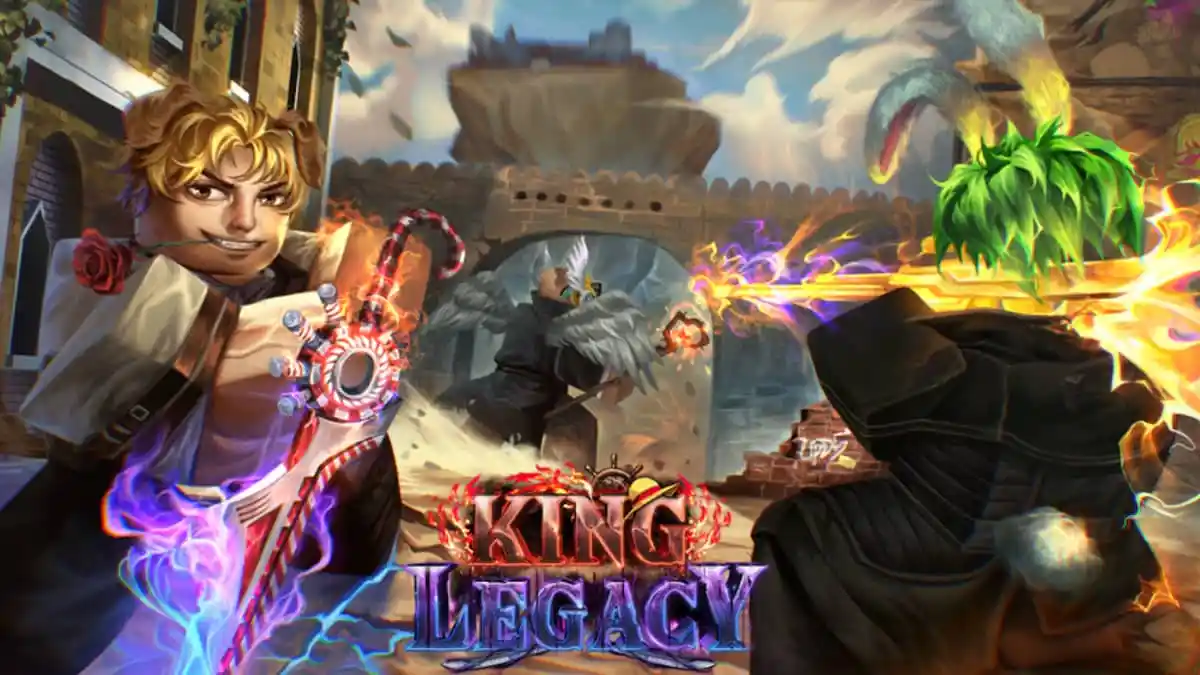Metroidvanias and bullet hells hold a special place in my heart for contrasting reasons. One is great for an explorative and relaxing experience that’s typically a one-and-done. The other, meanwhile, provides an adrenaline boost that gets many repeat playthroughs in vain attempts to scratch the skill ceiling.
From this perspective, examining CreSpirit and GemaYue’s latest collaboration TEVI seems contradictory but not unwelcome. It advertises itself as a Metroidvania/bullet hell mash-up, and it’s a concept I adore, despite my mindset on both genres. The cute anime art style and developer’s existing pedigree with Rabi-Ribi only served as the icing on the cake. TEVI is even sold as Rabi-Ribi‘s successor due to having the same genre mash-up and GemaYue’s return.
While I never played Rabi-Ribi, my time with TEVI might have sold me on it. Although TEVI suffers from a fairly uninteresting plot early on, the fantastic gameplay and progression system make it a joy to blast through.
TEVI (PC [reviewed], Switch)
Developer: CreSpirit, GemaYue, and Ein Lee
Publisher: CreSpirit and Neverland Entertainment
Released: November 29, 2023
MSRP: $29.99 (PC), $34.99 (Switch)

Some journeys start with a stumble
TEVI‘s hook is pretty simple. Players control the titular lead, a girl on the hunt for Astral Gears. These objects are filled with a powerful energy called mana, and Tevi collects them to help her rabbit-obsessed father’s research.
Joining her are Celia and Sable, an angel and demon who are both created from magitech. They mostly follow her journey inside her orbiters, tiny floating orbs that shoot off various ranged attacks. Of TEVI‘s narrative choices, it is neat seeing something like magitech recontextualized as an entire race of people with distinct subraces.
Unfortunately, it takes a bit for the story to get rolling. While the opening sequence set 30 years prior helps set up TEVI‘s important plot points, it takes some time for anything interesting to happen. For the first few hours, the plot devolves into looking for Astral Gears without much direction and comes off as unfocused.
The conversations around Celia’s chest size and the aforementioned obsession Tevi’s father has with rabbits don’t help, either. The latter comes off especially weird, given how he projects it a bit onto his daughter, whose hat has mechanical rabbit ears to blend in with beastkin, who look human with animal ears and sometimes tails.
These only happen a few times around the starting hours and for brief moments, but this is what TEVI leads with. So while I was enjoying the gameplay loop, it did feel like I was watching an unfunny anime during cutscenes.
Any issues I have with the narrative disappear quickly as the tone focuses on the Astral Gears’ purpose, and stopping the spread of a corrupting entity known as the Decay. TEVI never transcends into a storytelling masterpiece, but the core characters get solid arcs, and the closing hours are compelling with a surprisingly bittersweet conclusion.
While having a slow pace at the start of a story is fine, TEVI doesn’t put its best foot forward. At least my biggest issues with the story don’t occur often, and really just didn’t leave the best first impression.
Hopping through art
Even if my story complaints extended throughout TEVI, the art direction would have compelled me to keep playing. Throughout the entirety of its runtime, TEVI is an ocular feast.
It’s hard to determine my favorite area in the game because each has something special about it. From Morose’s strangely comfy industrial setting, to the adorable mushroom cottage-core vibes of Merry Village, even the beginning areas are distinct and lovely.
TEVI is generally a relaxing game to casually roam around in. Some of my favorite moments came from just soaking in the varying atmospheres. Even the rainy and somewhat melancholic Gloomwood and the city of Ana Therma are pleasant to explore for collectibles.
This isn’t to say that TEVI only has the cozy vibes going for it. Some areas, like The Plagued Forest, show how devastating Decay is by turning a normal forest into a toxic wasteland. The creatures and machinery still alive are corruptions of their former selves, spewing even more Decay. It’s so prevalent in the air that, before entering the forest, Tevi needs a gas mask to protect her from the toxins.
The Plagued Forest also happens to be where TEVI‘s plot picks up, since it demonstrates how Decay took over swathes of its world. One similarly desolate mid to late-game area is particularly haunting due to its connection with Tevi’s backstory, showing glimmers of what was there before.
TEVI‘s character art is also solid, if indistinct from other games with an anime-adjacent art style. Even though some of the revealing outfits look genuinely uncomfortable to wear, both major and minor characters have cool designs. A standout for me is Tevi’s design, which demonstrates her capabilities as a mechanic while appearing easy to move around in. It’s rare for me to like the protagonist’s design the most in a game, but Tevi herself is cool enough that I’d want to cosplay her.
As wonderful as TEVI‘s art direction is, its gameplay is its greatest strength. I would consider it good enough that it’s become arguably my favorite Metroidvania this year, and one that’s perfect for playing on a handheld.

Heavenly bullet hell in my Metroidvania?!
TEVI‘s best part is by far its gameplay loop because it’s a joy to play. It takes the best of its inspirations and goes wild with them.
Starting with how it handles its Metroidvania elements, exploration is fantastic. Not just for how pretty its world looks, but because exploration is almost always rewarding. There’s a lot to see for sure, but it sometimes feels like there’s a potion with a permanent boost or money blocks around every corner.
Permanent movement abilities also come along at an even pace. There are mainstays like the double jump and slide, but others stand out in fun ways. The jetpack, for one, lets Tevi gain more air while letting her float for a few seconds. Once I got used to how it worked, the jetpack was fantastic for landing jumps I would have otherwise missed. It’s also fantastic in boss bottles, for avoiding the tail end of particularly long attacks.
And TEVI‘s boss fights have some wild attacks. This is where the bullet-hell inspiration comes into play. Boss battles are the game’s biggest highlights, and bring out its best qualities.
Although combat isn’t deep, it provides some fun options. Airdashes and slides work as attacks and are great for quick movement, and Tevi’s basic four-hit combo is always reliable for solid damage. Celia and Sable also have three different charge shots which have their uses, both in and out of combat. These and more can receive flat upgrades, or be boosted with sigils Tevi can equip.
If boss attack patterns remained simple and relatively grounded, TEVI‘s combat would be serviceable. Thankfully this isn’t the case, as even boss encounters in the opening hours are a blast to fight.
An early example of this is Tevi’s friend and self-appointed rival, Vena. As another engineer, she attacks using her various bombs and stat-buffing robots to give her a leg up. It’s a great introduction to how the dozens of boss encounters alternate between massive lasers, lock-on attacks, and clusters to take out the player. Those three are the most rudimentary descriptions of boss moves, but each uses those basic concepts to create dozens of dazzling attacks that take all sorts of different shapes and speeds.
Another thing I appreciate about the boss progression is that each new encounter incrementally adds to the bullet pattern complexity. Even with a good bit of upgrades collected, each fight felt like it was always getting a bit harder. The final encounter had me sweating because of how much there was to keep track of. Late-game fights are no joke in TEVI, with plenty of screen-filling attacks and narrow margins to avoid them, and I love it.
It’s a small point to harp on, but it’s an area TEVI excels because, from a gameplay and narrative standpoint, the stakes match up pretty well. I wish I could say the same about normal enemies, however. While not actively detrimental to the overall experience, normal enemies pale in comparison to the boss encounters.
There isn’t much to say about the regular enemies, other than they serve their purpose as obstacles. Not to say they are poorly designed. Even the most basic machine enemies recycled throughout the game always come back with a unique spin on their base attacks. It’s just that the bosses absolutely shined brighter whenever they appeared over TEVI‘s lengthy adventure.
A lengthy and worthwhile journey
Something that surprised me about TEVI was its length, taking around 25 hours with only half of the items collected. With detailed exploration and dedication to find every item and upgrade, playtime could probably increase to 30-35 hours.
This doesn’t even account for how replayable TEVI is, with how it handles difficulty. Alongside increasing enemy attack damage, higher difficulties also bump up the enemy bullet density. It’s a neat way of keeping repeat playthroughs on high difficulties fresh. This doesn’t even account for other modifiers, including a Turbo Mode to increase game speed or Random Sigils, which randomizes where sigils are found in the world.
These possibilities wouldn’t matter much if TEVI was a slog to get through, but it’s the opposite. Even if the story drags in the beginning and it’s easy to blitz past normal enemies, TEVI is always a joy. Simply maneuvering around the environment is wonderful due to how beautiful and varied each locale is.
The boss battles make TEVI shine the most because it has several of the best fights I’ve played this year. As odd as this comparison might be, I’d say they’re as enjoyable as Armored Core 6‘s fights. Both have frantic and challenging battles that are never unfair.
TEVI is a pleasant surprise that hopefully doesn’t fly under most radars. Even with my gripes, I can comfortably recommend TEVI to anyone looking for a solid Metroidvania with a bullet hell twist.
[This review is based on a retail build of the game provided by the publisher.]













Published: Dec 18, 2023 04:57 pm